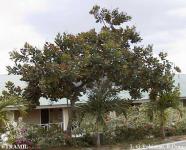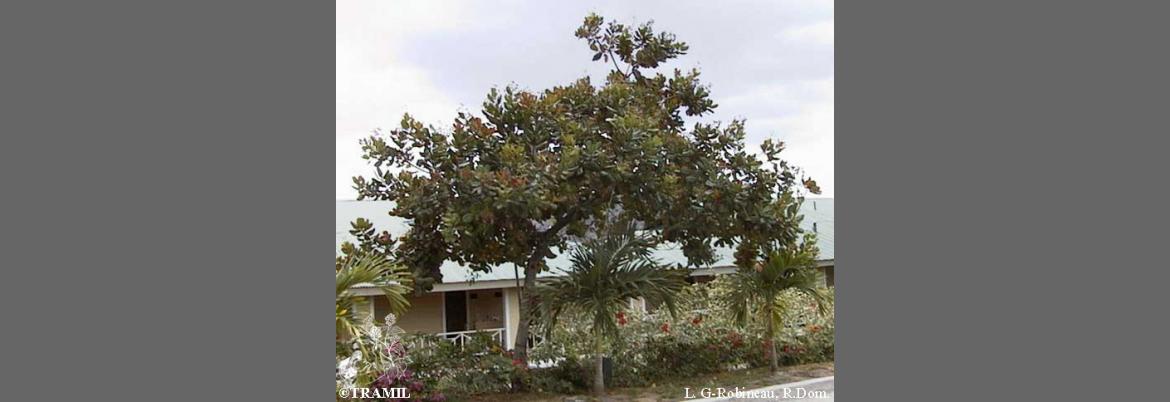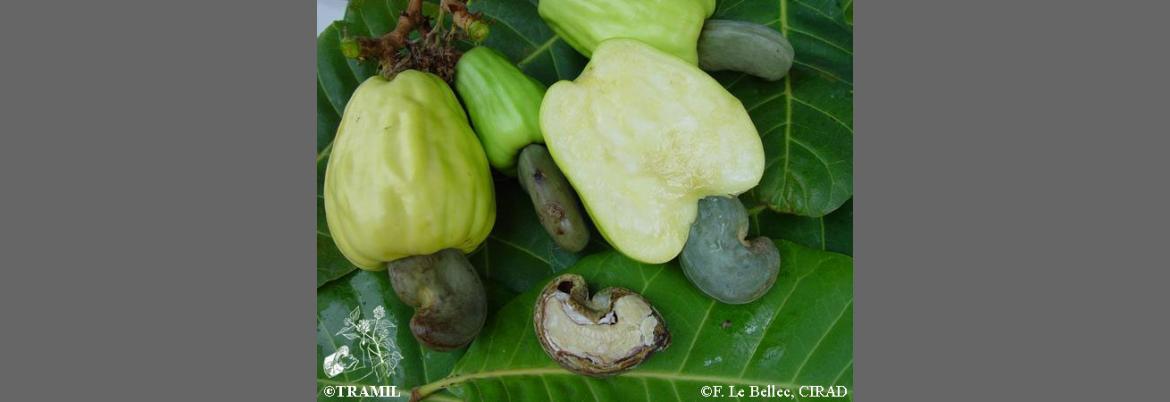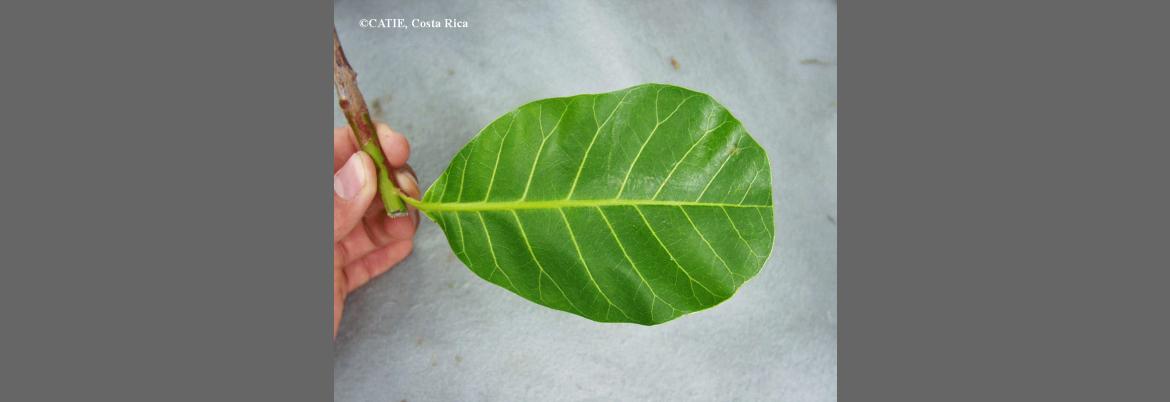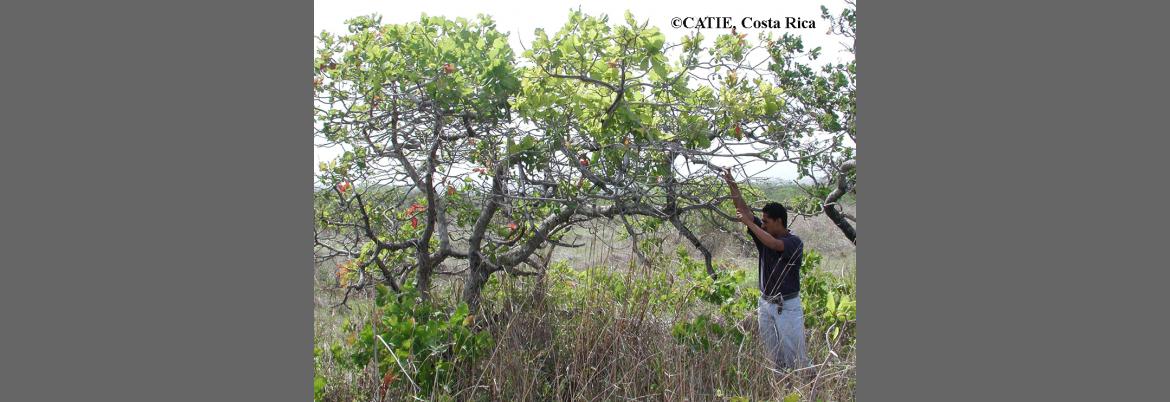1 SOLIS P, CORREA M, GUPTA M, 1995 Encuesta TRAMIL (Comunidades afro-caribeñas). Centro de Investigaciones Farmacognósticas de la Flora Panameña CIFLORPAN, Facultad de Farmacia, Universidad de Panamá, Panamá, Panamá.
2 WHO, 1991 Guidelines for the assessment of herbal medicines. WHO/TRM/91.4. Programme on Traditional Medicines, WHO, Geneva, Switzerland.
3 MELO CAVALCANTE AA, RUBENSAM G, PICADA JN, GOMES DA SILVA E, FONSECA MOREIRA JC, HENRIQUES JA, 2003 Mutagenicity, antioxidant potential, and antimutagenic activity against hydrogen peroxide of cashew (Anacardium occidentale) apple juice and cajuina. Environ Mol Mutagen 41(5):360-369.
4 SATYNARAYANA D, MYTHIRAYEE C, KRISHNAMURTY V, MADHAVAKRISHNA W, 1978 Studies on the polyphenols of cashew apple (Anacardium occidentale). Leather Sci (Madras) 25:51-54.
5 KUBO J, LEE JR, KUBO I, 1999 Anti-Helicobacter pylori agents from the cashew apple. J Agr Food Chem 47(2):533-537.
6 KUBO I, OCHI M, VIERA PC, KOMATSU S, 1993 Antitumor agents from the cashew (Anarcadium occidentale) apple juice. J Agr Food Chem 41(6):1012-1015.
7 MAC LEOD A, DE TROCONIS N, 1982 Volatile flavour components of cashew apple (Anacardium occidentale). Phytochemistry21:2527-2530.
8 PRICE RL, HOLANDA LF, MOURA FE, MAIA GA, MARTIN CB, 1975 Constituents of Brazilian cashew apple juice. Cienc Agron 5(1):61.
9 MAIA GA, BROWN WH, WHITING FM, STULL JW, 1975 Cashew fatty acids. Hort Science10:233.
10 MAIA GA, STULL JW, 1977 Fatty acid and lipid composition of cashew (Anacardium occidentale). Cienc Agron7(1):49.
11 KUBO I, KOMATSU S, OCHI M, 1986 Molluscicides from the cashew Anacardium occidentale and their large scale isolation. J Agr Food Chem 34(6):970-973.
12 TSUCHIYA H, HAYASHI H, SATO M, SHIMIZU H, INUMA M, 1999 Quantitative analysis of all types of beta-carboline alkaloids in medicinal plants and dried edible plants by high performance liquid chromatography with selective fluorometric detection. Phytochem Anal10(5):247-253.
13 GEDAM PH, SAMPATHKUMARAN PS, SIVASAMBAN MA, 1972 Examination of components of cashew nut shell liquid by NMR. Indian J Chem 10:388-391.
14 TOYOMIZU S, SUGIYAMA S, JIN RL, NAKATSU T, 1993 Alpha-glucosidase and aldose reductase inhibitors constituents of cashew Anacardium occidentale, nut-shell liquids. Phytother Res7(3):252-254.
15 AMALA B, SWARNALAKSHMI T, GOMATHI K, AMBUJAVALLI L, NAGARAJAN S, 1980 Anti-inflamatory activity of (-)-epicatechin. Abstr 13th Annu Conf Indian Pharmacol Soc Jammu-Tawi India Sept 30- Oct 2 1980: Abstr-F5
16 SWARNALAKSHMI T, GOMATHI K, SULOCHANA N, BASKAR EA, PARMAR NS, 1981 Anti-inflamatory activity of (-)-epicatechin, a bioflavonoid isolated from Anacardium occidentale Linn. Indian J Pharm Sci 43:205-208.
17 SUBRAMANIAN S, JOSEPH K, NAIR A, 1969 Polyphenols of Anacardium occidentale. Phytochemistry8:673.
18 GARG S, KASERA H, 1984 Antibacterial activity of the essential oil ofAnacardium occidentale. Indian Perfum 28(2):95-97.
19 ARYA R, BABU V, ILYAS M, NASIM KT, 1989 Phytochemical examination of the leaves of Anarcadium occidentale. J Iindian Chem Soc 66(1):67-68.
20 MOTA M, TOMAS G, BARBOSA FILHO J, 1985
Anti-inflamatory actions of tannins isolated from the bark ofAnacardium occidentale L. Lab. de Tecnologia Farmacéutica, Univ. Federal de Paraiba, 58.000, Joäo Pessoa, Paraíba, Brasil.
21 DINDA B, CHATTERJEE L, BANERJEE, 1987 Sterols from Anacardium occidentale. J Indian Chem Soc 64(10):647-648.
22 SOLIS PN, RODRIGUEZ N, ESPINOSA A, GUPTA MP, 2004 Estudio antimicrobiano de algunas plantas TRAMIL con usos en Martinica. Informe TRAMIL. Centro de Investigaciones Farmacognósticas de la Flora Panameña CIFLORPAN, Facultad de Farmacia, Universidad de Panamá, Panamá, Panamá.
23 CONSOLI RA, MENDES NM, PEREIRA JP, SANTOS BDS, LAMOUNIER MA, 1988 Larvicidal properties of plant extracts against Aedes fluviatilis (Lutz) (Diptera: Culicidae) in the laboratory. Mem Inst Oswaldo Cruz Rio de Janeiro 83(1):87-93.
24 VERPOORTE R, DIHAL PP, 1987 Medicinal plants of Surinam IV. Antimicrobial activity of some medicinal plants. J Etnopharmacol21(3):315-318.
25 EICHBAUM F, 1949 Biological properties of anacardic acid O-penta-decadienyl-salicylic acid and related compounds. Memorias do Instituto Butantá 19:119-133.
26 LAURENS A, 1982 Study of antimicrobial activity ofAnacardium occidentale L. Ann. Pharm. Fr 40(2):143-146.
27 DE SOUZA CP, 1992 The use of the shell of the cashew nut, ofAnacardium occidentale, as an alternative molluscicide. Rev Inst Med Trop Sao Paulo, Brazil 34(5):459-466.
28 TYMAN J, LAM S, 1978 Long chain phenol: part XI composition of natural cashew nut-shell liquid (Anacardium occidentale) from various sources. Lipids 13:525.
29KUBO I, 1994 Tyrosinase inhibitors from Anacardium occidentale fruits. J Nat Prod 57(4):545-551.
30 LIOGIER A, 1990 Plantas medicinales de Puerto Rico y del Caribe. San Juan, Puerto Rico: Iberoamericana de Ediciones. p201.
31 GarcIa-GONZÁLEZ M, BARBOZA CJ, 2005 Velocidad del tránsito intestinal en ratones, del extracto acuoso de hojas nuevas frescas de Anacardium occidentale. Informe TRAMIL. PRONAPLAMED. Depto de Fisiología, Escuela de Medicina, Universidad de Costa Rica, San Pedro, Costa Rica.
32GarcIa-GONZALEZ M, BARBOZA CJ, 2005 Toxicidad aguda (3000 mg/kg) dosis repetida, en ratones, del extracto acuoso de hojas nuevas frescas de Anacardium occidentale. Informe TRAMIL.PRONAPLAMED. Depto de Fisiología, Escuela de Medicina, Universidad de Costa Rica, San Pedro, Costa Rica.
33 GarcIa-GONZÁLEZ M, BARBOZA CJ, 2005 Toxicidad aguda (5000 mg/kg) dosis repetida, en ratones, del extracto acuoso de hojas nuevas frescas de Anacardium occidentale. Informe TRAMIL.PRONAPLAMED. Depto de Fisiología, Escuela de Medicina, Universidad de Costa Rica, San Pedro, Costa Rica.
